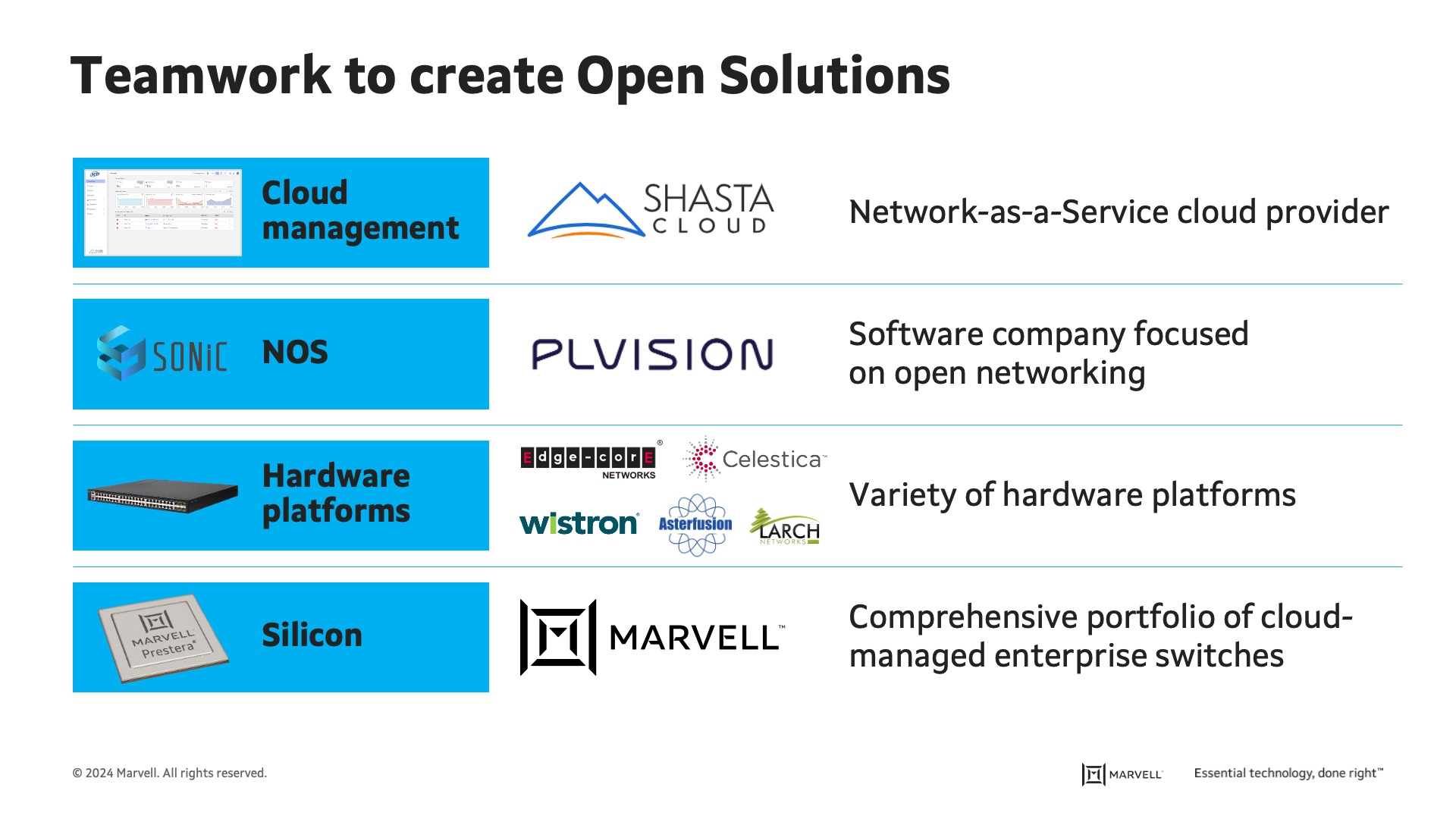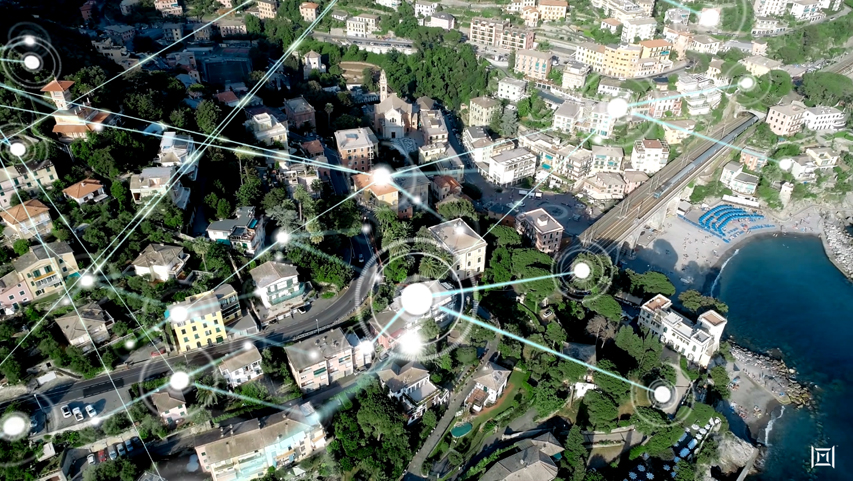

Open Networking is not a new concept. SONiC (the Software for Open Networking) has been around for some time, and cloud-managed campus switches based on proprietary NOS (Network Operating System), are also not new. What’s truly novel is the comprehensive solution that finally brings open-source SONiC to the campus networks and adds to it a layer of cloud management and zero trust provisioning, all running on a cost-optimized hardware platform specifically tailored to campus networks: “Cloud Managed Enterprise” or CME.
In recent years, Open Networking offered the hyperscale operators the option to use open-source software on a variety of merchant silicon, providing freedom from the lockdown imposed by the big system vendors. The next challenge was to bring similar benefits to campus networks, particularly to what is now referred to as CME.
This blog will demonstrate how the Marvell ® Prestera® switches, equipped with a comprehensive Software Development Kit, along with the collaborative efforts of a vibrant industry community called OpenLAN Switching (OLS), have created this open cloud-managed solution for campus networks.
The power of a community
The first thing to recognize is that it took teamwork from multiple companies to create this open solution. Under the umbrella of the Telecom Infra Project (TIP), various companies gathered and created a working group called OpenLAN. Within OpenLAN, two sub working groups formed: OpenWi-Fi and OpenLAN Switching (OLS), which is the subgroup relevant to this discussion.
Numerous companies actively participated in the collaborative effort—Figure 1 mentions just some of them—organized according to their role in the solution.

Figure 1: Breakdown of companies involved in OpenLAN Switching
By George Hervey, Principal Architect, Marvell

In the previous TIPS to Living on the Edge, we looked at the trend of driving network intelligence to the edge. With the capacity enabled by the latest wireless networks, like 5G, the infrastructure will enable the development of innovative applications. These applications often employ a high-frequency activity model, for example video or sensors, where the activities are often initiated by the devices themselves generating massive amounts of data moving across the network infrastructure. Cisco’s VNI Forecast Highlights predicts that global business mobile data traffic will grow six-fold from 2017 to 2022, or at an annual growth rate of 42 percent1, requiring a performance upgrade of the network.
By George Hervey, Principal Architect, Marvell

The mobile phone has become such an essential part of our lives as we move towards more advanced stages of the “always on, always connected” model. Our phones provide instant access to data and communication mediums, and that access influences the decisions we make and ultimately, our behavior.
According to Cisco, global mobile networks will support more than 12 billion mobile devices and IoT connections by 2022.1 And these mobile devices will support a variety of functions. Already, our phones replace gadgets and enable services. Why carry around a wallet when your phone can provide Apple Pay, Google Pay or make an electronic payment? Who needs to carry car keys when your phone can unlock and start your car or open your garage door? Applications now also include live streaming services that enable VR/AR experiences and sharing in real time. While future services and applications seem unlimited to the imagination, they require next-generation data infrastructure to support and facilitate them.
Copyright © 2025 Marvell, All rights reserved.